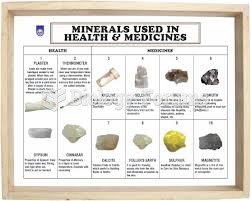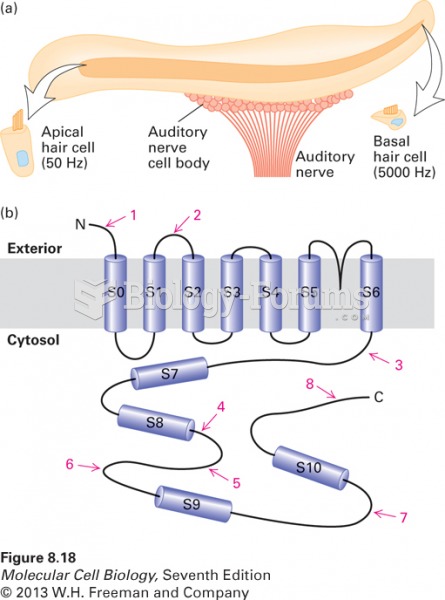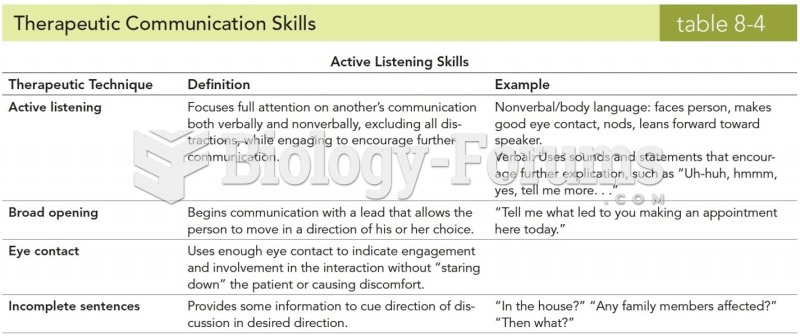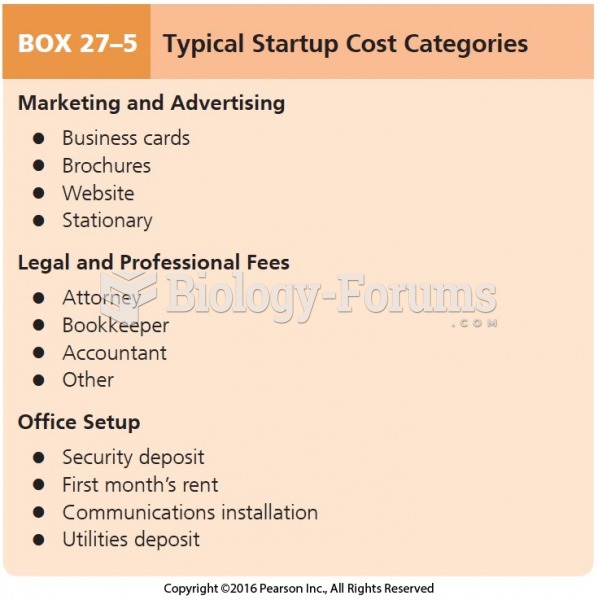Answer to Question 1
The NCCAM classifies CAM therapies into three categories:
Natural products. This includes the use of a variety of herbal medicines (also known as botanicals), vitamins, and minerals. Many are sold over-the-counter as dietary supplements. CAM natural products include probiotics-live microorganisms (usually bacteria) that are similar to microorganisms normally found in the human digestive tract.
The most commonly used nonvitamin/nonmineral product was fish oil or omega-3.
Mind-body medicine. This practice focuses on the interactions among the brain, mind, body, and behavior, with the intent to use the mind to affect physical functioning and promote health. Many CAM practices embody this concept in different ways. The most common are meditation, yoga, and acupuncture. Other examples of mind-body practices include deep-breathing exercises, guided imagery, progressive muscle relaxation, qigong, and tai chi.
Manipulative and body-based practices. This practice focuses primarily on the structures and systems of the body, including the bones and joints, soft tissues, and circulatory and lymphatic systems. Among the therapies within this category are spinal manipulation and massage therapy.
Spinal manipulation is performed by chiropractors and by other health care professionals, such as physical therapists, osteopaths, and some conventional medical doctors. Practitioners use their hands or a device to apply a controlled force to a joint of the spine, moving it beyond its passive range of motion. The amount of force applied depends on the form of manipulation used. Massage therapy encompasses many techniques. In general, therapists manipulate the muscles and other soft tissues of the body. People use massage for a variety of health-related purposes, including to relieve pain, rehabilitate sports injuries, reduce stress, increase relaxation, address anxiety and depression, and aid general well-being.
Answer to Question 2
The text says to watch out for exercise machines fitted with expensive gadgets. Monitors that provide exercise heart rate, work output, caloric expenditure, speed, grade, and distance may help motivate you, but they are expensive, need repairs, and do not enhance the actual fitness benefits of the workout. Look at maintenance costs and check for service personnel in your community.







